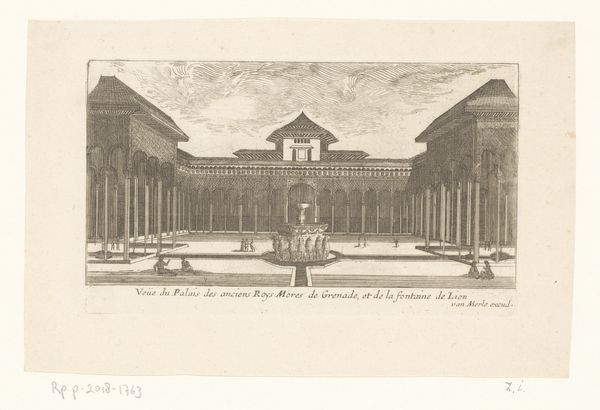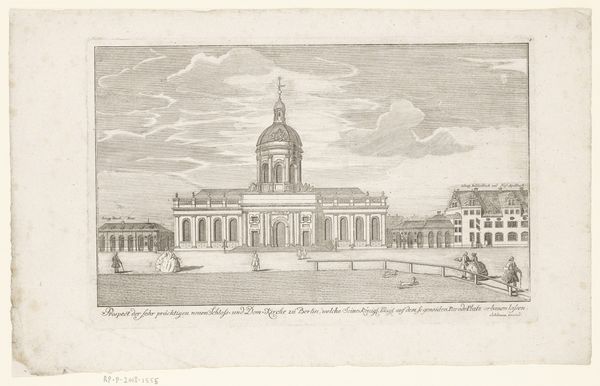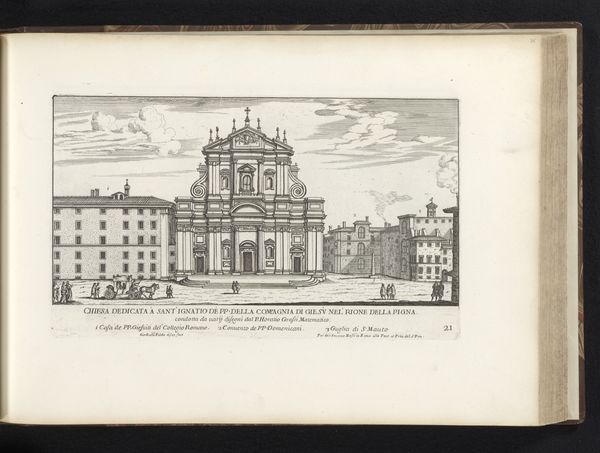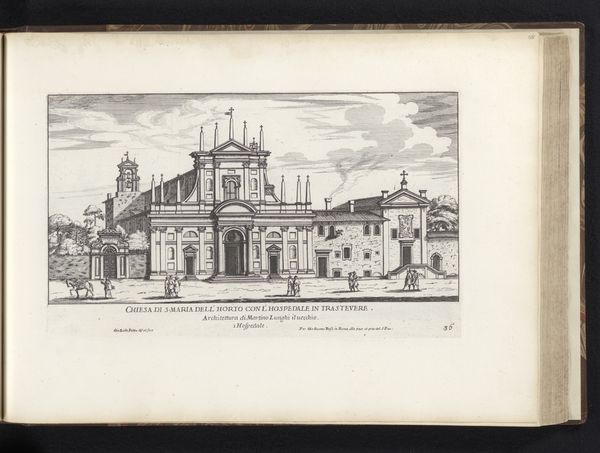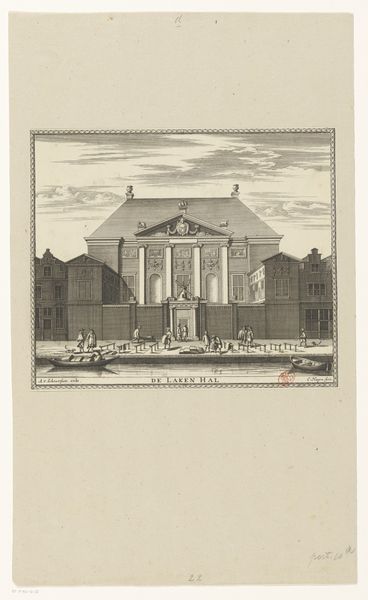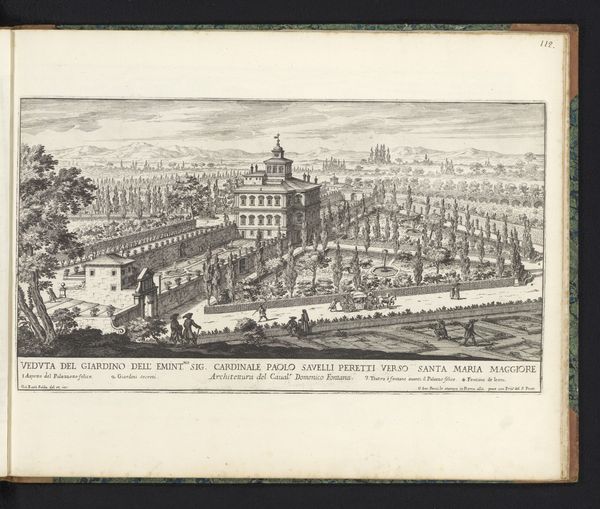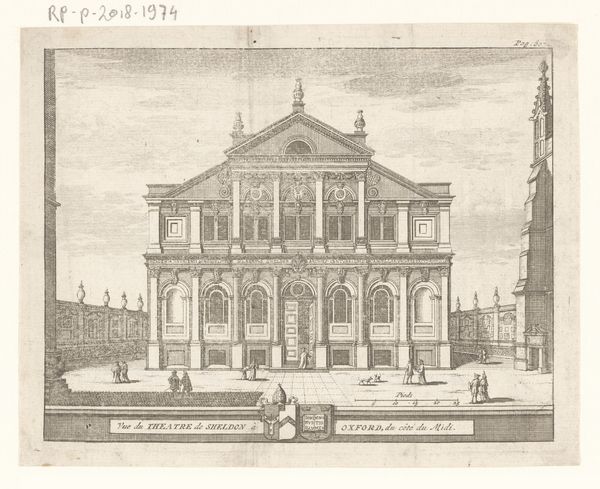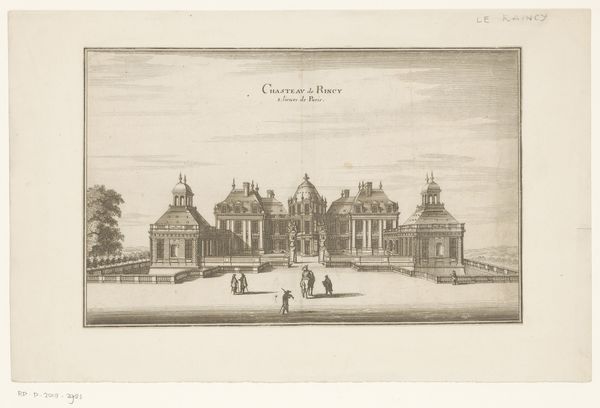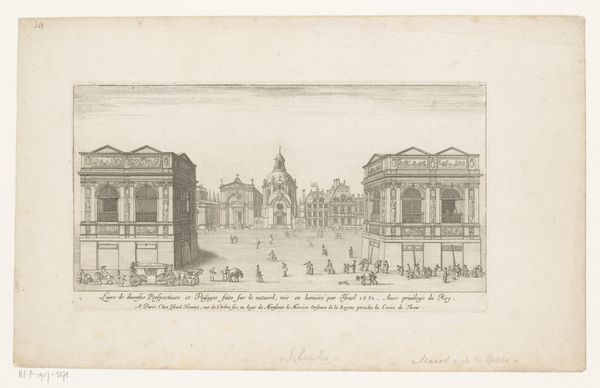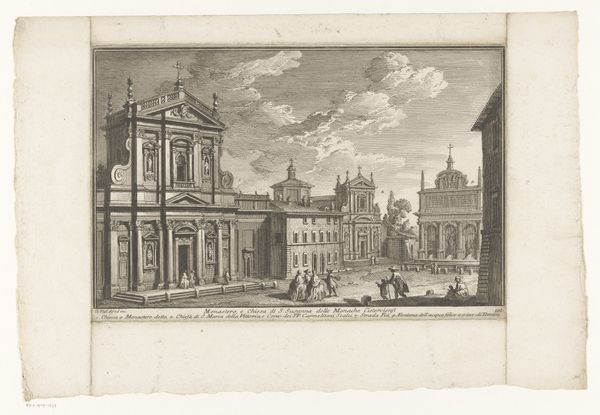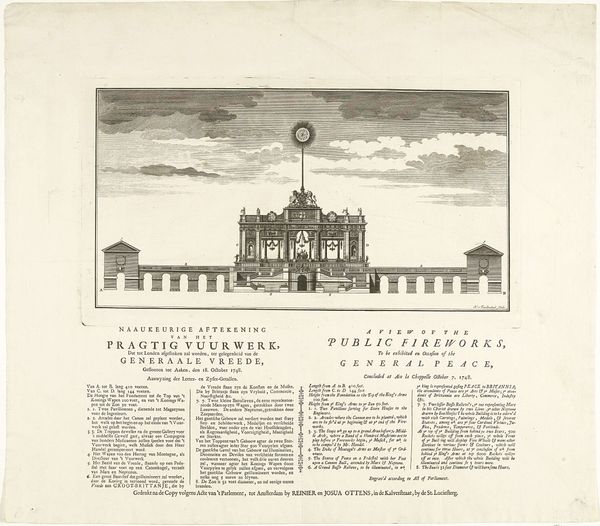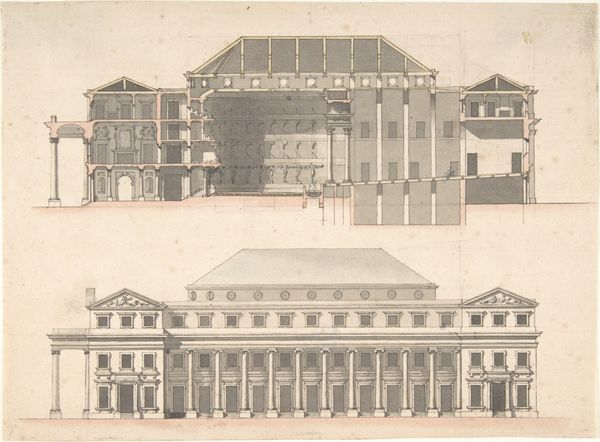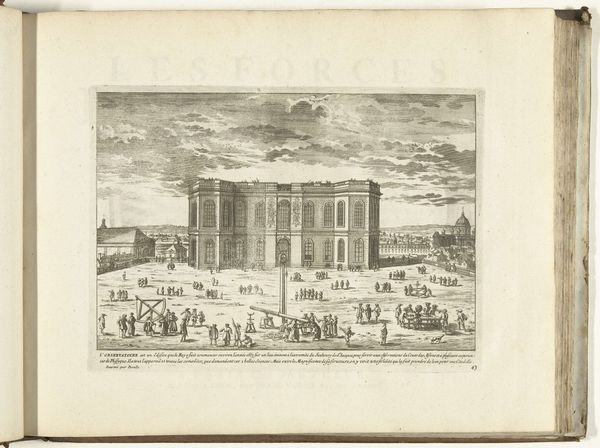
"Opstalt af et militærhospital til tusind personer" 1764
0:00
0:00
print, etching, engraving, architecture
#
neoclacissism
# print
#
etching
#
old engraving style
#
landscape
#
etching
#
history-painting
#
engraving
#
architecture
Dimensions: 283 mm (height) x 437 mm (width) (bladmaal)
Editor: This etching from 1764 by Johannes Gottfred Bradt, titled "Opstalt af et militærhospital til tusind personer," depicts a proposed military hospital. The architectural style is so clean, with all those straight lines. It looks so sterile. What symbolic meaning do you find in such a monumental and severe design? Curator: That sterility is key. Look at the repetition of form, the unwavering symmetry, even the figures flanking the structure mirror each other. Doesn't it speak to a desire for order and control? The Enlightenment valued reason above all else. Editor: Yes, the Age of Reason. So, this idealized hospital becomes a symbol for the enlightened state, imposing order even on the chaos of war and disease? Curator: Precisely. Notice the dome, echoing classical temples. What connotations does that bring to mind? Editor: Well, Greek and Roman architecture is often associated with democracy, philosophy, and learning, right? Even power. Curator: It is a conscious reaching back to a perceived golden age. This hospital is more than just a building; it’s a statement. Look at the vastness suggested in the print -- what do you imagine a “hospital for a thousand persons” meant to the artist and the intended viewer? Editor: A sense of the hospital's importance and scale. This wasn't just about healing the sick. It's a projection of state power. Fascinating! Curator: And in etching, with its stark contrasts, he found a medium to convey this vision with unwavering clarity. We begin to see how even architecture became a powerful visual language.
Comments
No comments
Be the first to comment and join the conversation on the ultimate creative platform.
